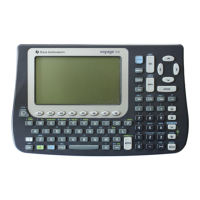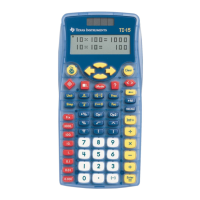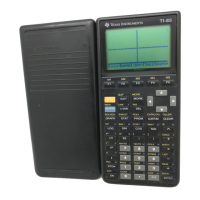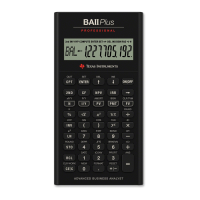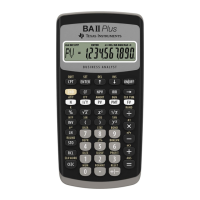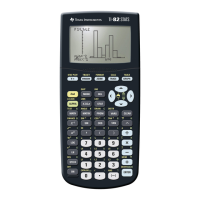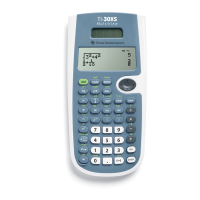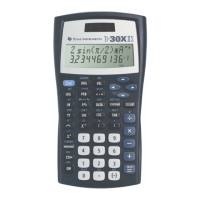866 Appendix A: Functions and Instructions
rowSwap() MATH/Matrix/Row ops menu
rowSwap(
matrix1
,
rIndex1
,
rIndex2
) ⇒
⇒⇒
⇒
matrix
Returns
matrix1
with rows
rIndex1
and
rIndex2
exchanged.
[1,2;3,4;5,6]! Mat ¸
1 2
3 4
5 6
rowSwap(Mat,1,3)
¸
5 6
3 4
1 2
RplcPic CATALOG
RplcPic
picVar
[,
row
][,
column
]
Clears the Graph screen and places picture
picVar
at pixel coordinates (
row
,
column
). If you do not
want to clear the screen, use
RclPic.
picVar
must be a picture data type variable.
row
and
column
, if included, specify the pixel
coordinates of the upper left corner of the picture.
Default coordinates are (0, 0).
Note: For less than full-screen pictures, only the
area affected by the new picture is cleared.
rref() MATH/Matrix menu
rref(
matrix1
[,
tol
]) ⇒
⇒⇒
⇒
matrix
Returns the reduced row echelon form of
matrix1
.
rref([ë 2,ë 2,0,ë 6;1,ë 1,9,ë 9;
ë 5,2,4,ë 4]) ¸
1 0 0 66/71
0 1 0
147
71
0 0 1 ë 62/71
Optionally, any matrix element is treated as zero
if its absolute value is less than
tol
. This tolerance
is used only if the matrix has floating-point
entries and does not contain any symbolic
variables that have not been assigned a value.
Otherwise,
tol
is ignored.
• If you use ¥¸ or set the mode to
Exact/Approx=APPROXIMATE, computations
are done using floating-point arithmetic.
• If
tol
is omitted or not used, the default
tolerance is calculated as:
5Eë 14 ù max(dim(
matrix1
))
ù rowNorm(
matrix1
)
Note: See also ref().
rref([a,b,x;c,d,y]) ¸
1 0
d
ø x-bø y
a
ø d-bø c
0 1
ë (cø x-aø y)
a
ø d-bø c
sec() MATH/Trig menu
sec(
expression1
) ⇒
⇒⇒
⇒
expression
sec(
list1
) ⇒
⇒⇒
⇒
list
Returns the secant of
expression1
or returns a list
containing the secants of all elements in
list1
.
Note: The result is returned as a degree, gradian
or radian angle, according to the current angle
mode setting.
In Degree angle mode:
sec(45) ¸ (2)
sec({1,2.3,4})
¸
{
1
cos(1)
1.000…
1
cos(4)
}

